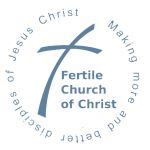Adult Bible Study -
Unlocking Scripture: How to Study the Bible with Depth and Understanding
Week 11
Studying Poetry and Wisdom Literature
This week we turn our focus to poetry and wisdom literature, rich genres that teach us deep truths through figurative language and vivid imagery. Mastering these sections of Scripture requires special tools and a thoughtful approach.
Key Takeaways
- Poetry uses figurative language and parallelism to convey deep truths.
- Wisdom literature provides practical life lessons rooted in God’s truth.
- Context, structure, and literary devices are essential to understanding these writings.
- Study tools such as commentaries and dictionaries help illuminate meaning.
Scripture References
- Psalm 1 – The blessed life contrasted with the wicked.
- Proverbs 3:5–6 – Trust in the Lord with all your heart.
- Ecclesiastes 3:1–8 – A time for everything under heaven.
Questions for Discussion
- What themes stand out in Psalm 1?
- How does the structure enhance the message?
- Identify poetic devices used in Psalm 23. How do they deepen its impact?
- What is the central lesson of Proverbs 3:5–6?
- How can it be applied in daily life?
Homework
Select a Proverb or Psalm and write a brief reflection on its main theme. Identify at least two poetic devices and describe their effect on the passage’s meaning.
Definitions and Examples for Week 11 Reference
Poetry
Definition:
A literary genre that uses artistic and rhythmic language to evoke emotion and convey truths. Biblical poetry often includes parallelism and vivid imagery.
Example:
“The Lord is my shepherd; I shall not want. He makes me lie down in green pastures.” (Psalm 23:1-2)
Wisdom Literature
Definition:
A category of biblical books that provide practical guidance and philosophical reflections on life, morality, and the nature of God.
Example:
“The fear of the Lord is the beginning of knowledge, but fools despise wisdom and instruction.” (Proverbs 1:7)
Books classified as wisdom literature include Job, Psalms, Proverbs, Ecclesiastes, and Song of Solomon.
Metaphor
Definition: A figure of speech that describes one thing as being another to convey meaning.
Example:
“The Lord is my rock, my fortress, and my deliverer.” (Psalm 18:2)
The metaphor “rock” symbolizes God’s strength and reliability.
Simile
Definition:
A figure of speech comparing two things using “like” or “as.”
Example:
“He shall be like a tree planted by the rivers of water, that brings forth its fruit in its season.” (Psalm 1:3)
The simile compares a righteous person to a well-rooted, flourishing tree.
Figurative Language
Definition:
Language that uses figures of speech to convey meanings beyond the literal interpretation. It includes metaphors, similes, and other literary devices.
Example:
“Your word is a lamp to my feet and a light to my path.” (Psalm 119:105)
The figurative language illustrates how God’s word provides guidance.
Parallelism
Definition:
A literary device common in Hebrew poetry where ideas are expressed in a repeating or contrasting pattern.
Example:
“The heavens declare the glory of God; the skies proclaim the work of his hands.” (Psalm 19:1)
In this form of synonymous parallelism, the second line restates the idea of the first.
Synonymous Parallelism
Definition:
The second line repeats or reinforces the idea of the first line in different words.
Example:
“The heavens declare the glory of God; the skies proclaim the work of his hands.” (Psalm 19:1)
Antithetic Parallelism
Definition:
The second line contrasts with the first, often using “but” or a similar contrasting word.
Example:
“For the Lord watches over the way of the righteous, but the way of the wicked leads to destruction.” (Psalm 1:6)
Synthetic Parallelism
Definition:
The second line adds to or completes the thought of the first line.
Example:
“The law of the Lord is perfect, reviving the soul; the statutes of the Lord are trustworthy, making wise the simple.” (Psalm 19:7)
Climactic Parallelism (Step Parallelism)
Definition:
The second line repeats a portion of the first line and then advances the thought.
Example:
“Ascribe to the Lord, O heavenly beings, ascribe to the Lord glory and strength.” (Psalm 29:1)
Emblematic Parallelism
Definition:
One line expresses a truth, and the other provides a metaphor or simile to illustrate it.
Example:
“As a deer pants for streams of water, so my soul pants for you, my God.” (Psalm 42:1)
Chiastic Parallelism (Inverted Parallelism)
Definition:
The structure follows an A-B-B-A pattern, repeating concepts in reverse order.
Example:
“But whoever listens to me will dwell secure and will be at ease, without dread of disaster.” (Proverbs 1:33)
Symbolic Parallelism
Definition:
The second line uses imagery or symbolism to amplify the meaning of the first line.
Example:
“Your word is a lamp to my feet and a light to my path.” (Psalm 119:105)
Here, “lamp” and “light” symbolically represent guidance and direction.
These definitions and examples will enhance the understanding of biblical poetry and wisdom literature, providing a foundation for thoughtful study and application..
